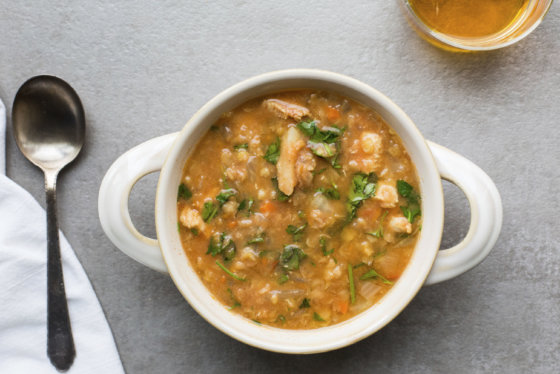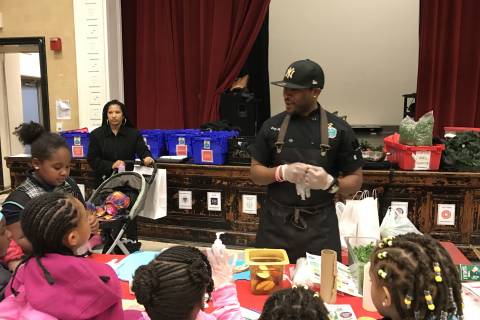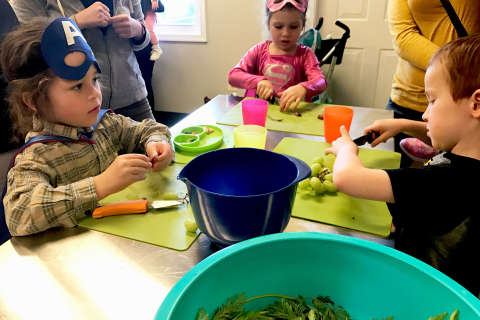WASHINGTON — Most days of the week, Isha Lee is all business at the Executive Office of Mayor Muriel Bowser, where she works in the Mayor’s Office on Volunteerism.
But Tuesdays are not one of those days.
On Tuesdays, Lee skips out of the office early, throws on a costume (usually a strawberry or sweet pea), and heads to Martin Luther King Jr. Elementary School where she spends the afternoon dancing, sampling food and chatting with neighbors.
“The music is good, the vibe is very happy,” she said about her Tuesday afternoon escapades.
Lee is one of many volunteers who help run monthly pop-up food markets at elementary schools east of the Anacostia River — D.C.’s largest food desert.
At these markets, spearheaded by Martha’s Table and the Capital Area Food Bank, students and their families are invited to shop for more than 20 pounds of fresh produce and pantry staples — all free of charge.
There are also chef demonstrations and lessons to encourage healthy eating at home.
“For us, this is really a food justice issue, making sure that our neighbors east of the river have as much access to fresh fruits and vegetables as those not living east of the river do,” said Caron Gremont, director of Healthy Eating at Martha’s Table.
While most areas in D.C. average six grocery stores per ward, Gremont said there are three, total, servicing Wards 7 and 8.
“We’re looking at two wards that should, on average, have 12 [grocery stores], and instead they have three. So there is a real struggle that families face just to access and buy healthy, high-quality food,” she said.
Lee added, “If you go into the local grocery stores, they’re so picked over because there are so many people that shop within those markets.”
To improve food access in these areas, Martha’s Table launched four school-based Joyful Food Markets in 2015. Now, there are 39 of these markets, reaching approximately 6,000 people, and the goal is to be in all 49 public and charter elementary schools in Wards 7 and 8 by next year.
Kimberly Hyman, a Joyful Food Market volunteer at Savoy Elementary School, has seen, firsthand, the impact that these free markets have on the local community — and her own family.
Hyman said after each market cooking demonstration, her 8-year-old son, a student at Savoy, is anxious to get home and test his own skills in the kitchen.
“To be able to see the kids come and get things that they don’t have — that’s a good thing,” Hyman said about the 200 to 400 students that come through Savoy’s market each month.
While a focus of the Joyful Food Markets is on the food distributed, the markets have come to embody more than groceries. In fact, most end in dance parties.
“It’s having neighbors standing next to neighbors, distributing cauliflower and talking about their favorite ways to cook, and it’s really created this deep culture around healthy eating and community,” Gremont said.
Lee added, “I live in the community, I see them working within the community, and I see that my neighbors, the children, are very happy.”
With the quick growth of the Joyful Food Markets, however, comes the need for more volunteers. Gremont said in addition to Martha’s Table staff, it takes up to 600 volunteers each month to run the program. Some markets have been “adopted” by private businesses, organizations and universities, including Lee’s office; others are run by a collection of 15 to 25 individual volunteers.
If you’re interested in volunteering at a Joyful Food Market, or adopting a market, visit marthastable.org and click on “Get Involved.” It helps if you’re able to lift heavy boxes, but Gremont said all you really need is a “joyful” attitude.








